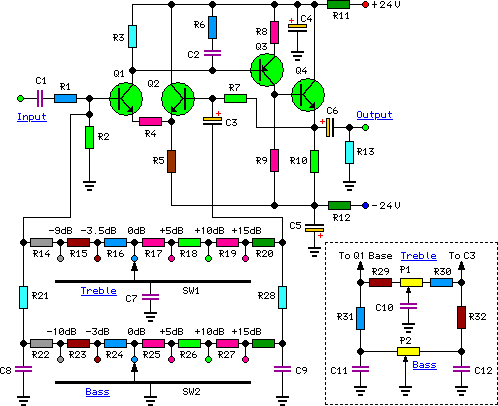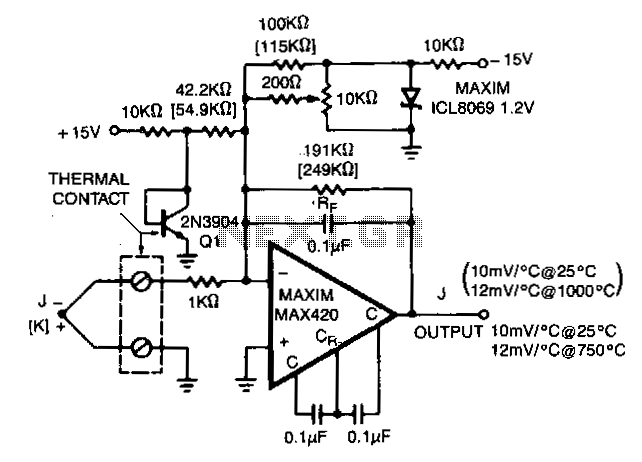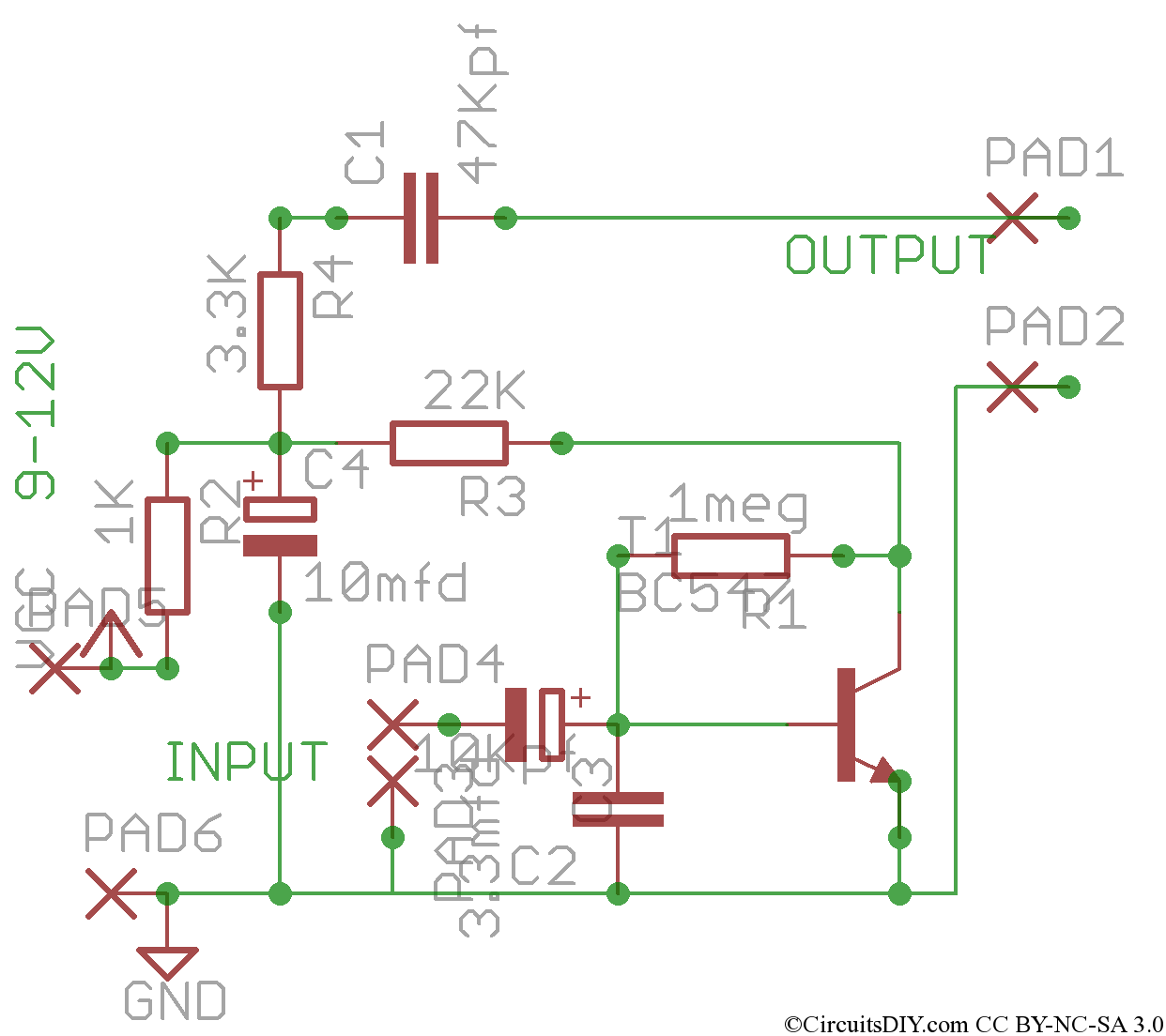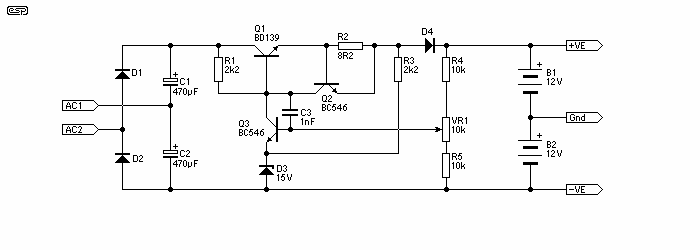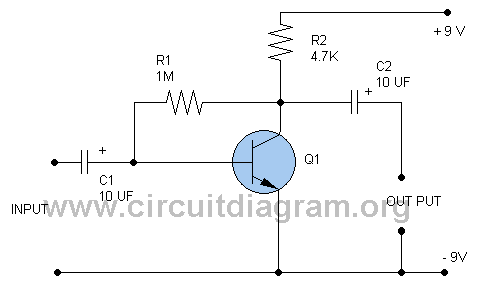
Hi-Fi Preamplifier
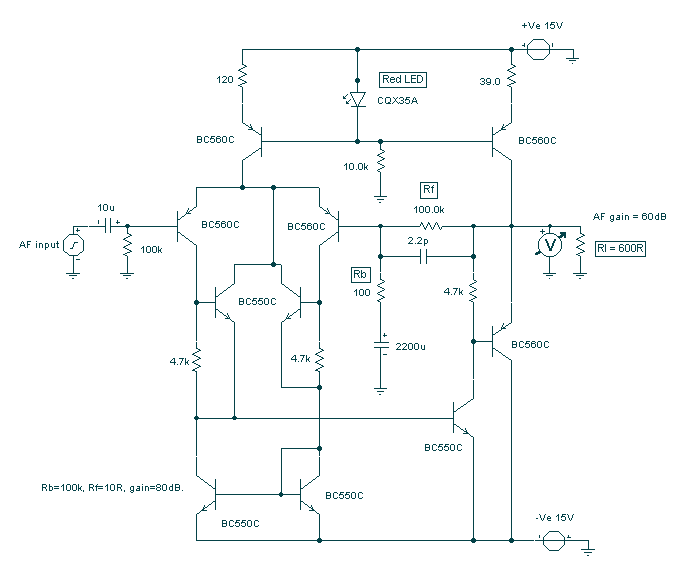
This circuit was submitted by Graham Maynard from Newtownabbey, Northern Ireland. It has an exceptionally good high frequency response, as demonstrated by applying a 100kHz squarewave to the input. Response graphs were produced using Tina Pro to highlight these characteristics.
Additional Content: The circuit design by Graham Maynard showcases an impressive high frequency response. This characteristic is evident when a 100kHz squarewave is applied to the input, a common test for assessing the high-frequency performance of a circuit. This feature makes it suitable for applications that require accurate and fast response to high-frequency signals.
The circuit's performance was further verified using Tina Pro, a powerful circuit simulation software. This tool was used to generate response graphs, which provide a visual representation of the circuit's behavior under different conditions. These graphs are crucial in analyzing the circuit's performance, as they can reveal potential issues such as distortion, noise, and instability that might not be apparent from a simple inspection of the circuit diagram.
In conclusion, the circuit submitted by Graham Maynard is a high-performance design that excels in handling high-frequency signals. Its performance has been thoroughly tested and verified, making it a reliable choice for high-frequency applications.This circuit was submitted by Graham Maynard from Newtownabbey, Northern Ireland. It has an exceptionally good high frequency response, as demonstrated by applying an 100kHz squarewave to the input. I have produced some response graphs using Tina Pro to highlight these characteristics. 🔗 External reference
Additional Content: The circuit design by Graham Maynard showcases an impressive high frequency response. This characteristic is evident when a 100kHz squarewave is applied to the input, a common test for assessing the high-frequency performance of a circuit. This feature makes it suitable for applications that require accurate and fast response to high-frequency signals.
The circuit's performance was further verified using Tina Pro, a powerful circuit simulation software. This tool was used to generate response graphs, which provide a visual representation of the circuit's behavior under different conditions. These graphs are crucial in analyzing the circuit's performance, as they can reveal potential issues such as distortion, noise, and instability that might not be apparent from a simple inspection of the circuit diagram.
In conclusion, the circuit submitted by Graham Maynard is a high-performance design that excels in handling high-frequency signals. Its performance has been thoroughly tested and verified, making it a reliable choice for high-frequency applications.This circuit was submitted by Graham Maynard from Newtownabbey, Northern Ireland. It has an exceptionally good high frequency response, as demonstrated by applying an 100kHz squarewave to the input. I have produced some response graphs using Tina Pro to highlight these characteristics. 🔗 External reference
